Whether completing a large DIY project or simply finishing a small piece of furniture, encountering light spots in your stain can be frustrating. These unsightly marks are often caused by uneven application, wood grain, or improper preparation. Fortunately, fixing light spots in stains is a simple process that can be done with just a few easy steps. In this blog post, we’ll provide you with a step-by-step guide on how to fix light spots in stain.
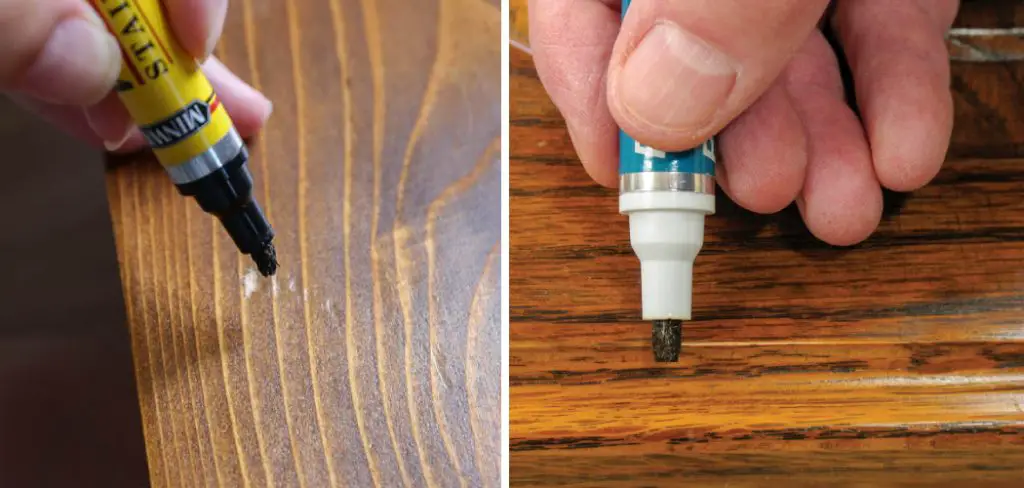
Can You Fix the Light Spots in the Stain?
Have you found yourself in a predicament with light spots in your stained wood furniture? Fear not, there may be a solution! But before jumping into a DIY fix, it’s important to identify the cause of the light spots. It could be a result of an uneven application of stain or an issue with the wood itself—once determined, research appropriate products or methods for the specific problem at hand.
And always proceed with caution, as staining can be a tricky process. Don’t be afraid to seek the advice of professionals or consult a tutorial before attempting any fixes. With a little guidance and patience, those pesky light spots could be a thing of the past.
Why Should You Fix Light Spots in Stain?
Have you ever noticed light spots in your stain and brushed them off as a small imperfection? It may seem like a glitch in an otherwise perfectly stained piece of wood, but fixing those light spots is as important as the stain itself. These spots can occur when the wood is not properly prepared, or the stain is not applied evenly, and they can detract from the overall appearance of the piece.
Taking the time to fix these light spots will ensure that your stain appears even and beautiful, bringing out the natural beauty of the wood. Don’t let small imperfections detract from the hard work you put into your staining project – fix those light spots today.
How to Fix Light Spots in Stain: A Step-by-Step Guide
Step 1: Identify the Problem Areas
The first step in fixing light spots in your stain is identifying the areas that must be addressed. Use a piece of sandpaper or steel wool to lightly sand the entire wood surface. This will help you recognize areas where the stain has been absorbed unevenly or where the color is simply too light. Once you’ve identified these spots, you can move on to the next step.
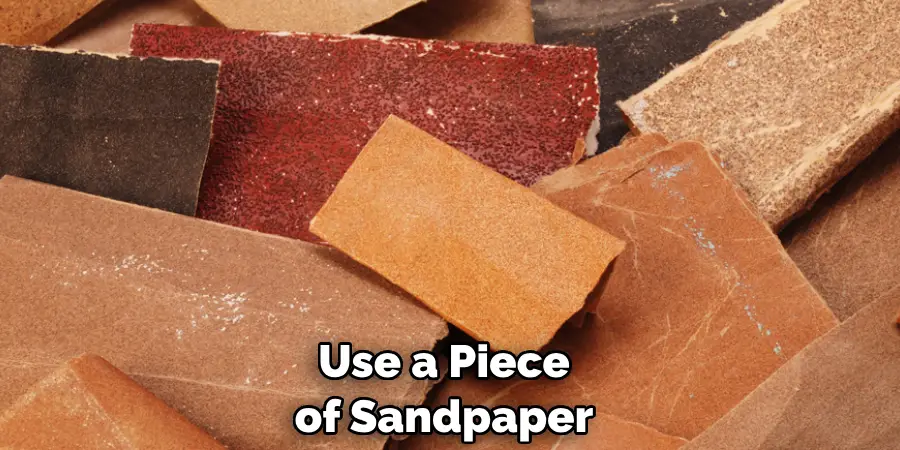
Step 2: Sand the Light Spots
Using fine-grit sandpaper, gently sand the areas that need to be fixed. Make sure to sand only the stained areas and not the surrounding wood. This will help smooth out the surface and remove any excess stains causing the problem.
Step 3: Apply More Stain
Once the area has been sanded, it’s time to apply more stain. Apply the same stain color to the light spots using a clean cloth or brush. Make sure to work the stain into the wood in a circular motion to ensure even coverage. Allow the stain to dry for the manufacturer’s recommended time before checking the color. If the color is still too light, apply another coat of stain and allow it to dry.
Step 4: Blend the Stain
If your stain has dried, but the color is still uneven, it’s time to blend the stain. Mix equal parts of the original stain color with a darker stain color that is a shade or two darker than the original stain. Apply the mixture evenly to the light spot, making sure to blend it in with the surrounding stained wood. Allow the area to dry, and check the color. Repeat this process until the color matches the rest of the stained wood.
Step 5: Seal the Stain
Once the stain has been fixed and the color is consistent, it’s time to seal the wood. Using a sanding block or fine-grit sandpaper, lightly sand the entire wood surface to smooth out any rough spots. Apply a clear coat of sealer to the entire piece, following the manufacturer’s instructions for application and drying time.
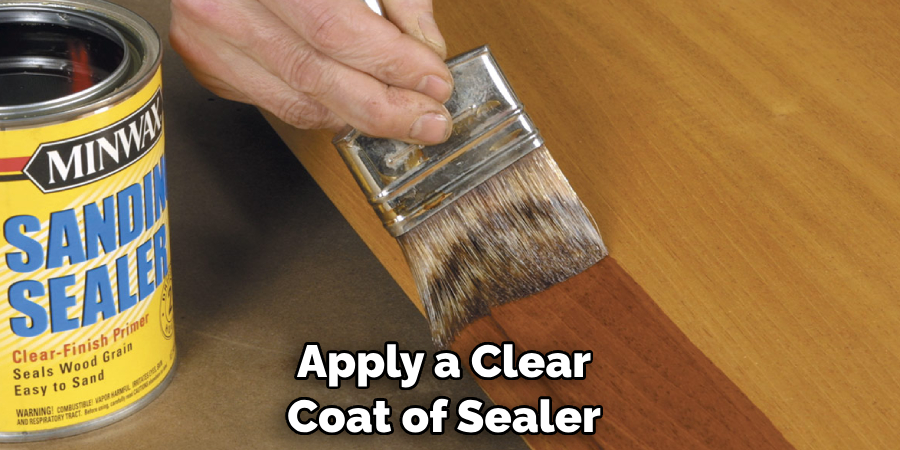
Step 6: Buff the Finish
Once the sealer has dried, you can buff the finish. Using a soft cloth and some steel wool, gently buff the wood until it’s shiny and smooth. This will help to remove any imperfections in the stain and create a beautiful finished look.
Step 7: Enjoy Your Stain Job
Now that your light spots have been fixed and the wood is sealed and buffed, it’s time to enjoy your work. Your stained surface should look beautiful, even with rich color that will last years. With proper maintenance, you can be sure that your stain job will stay looking great for a long time.
That’s it! You’ve now learned how to fix light spots in stain and create a stunning finished look you can be proud of. So go ahead and get to work – your stained wood is waiting!
5 Considerations Things When You Need to Fix Light Spots in Stain
1. The Size of the Area
The first thing you need to consider when fixing light spots in the stain is the size of the area. If the area is small, you may be able to sand it down and restain it. However, if the area is large, you may need to replace the entire piece of wood.
2. The Type of Wood
Another thing to consider is the type of wood. Some woods are more porous than others and will absorb more stains. As a result, it may be more difficult to fix light spots on these types of wood.
3. The Stain Color
The color of the stain can also affect how difficult it is to fix light spots. If the stain is a light color, it will be easier to cover up the light spots. However, if the stain is dark, it will be more difficult to cover up the light spots.
4. The Type of Finish
The type of finish on the wood can also make a difference in how difficult it is to fix light spots. If the wood has a glossy finish, it will be more difficult to cover up the light spots. However, if the wood has a matte finish, it will be easier to cover up the light spots.
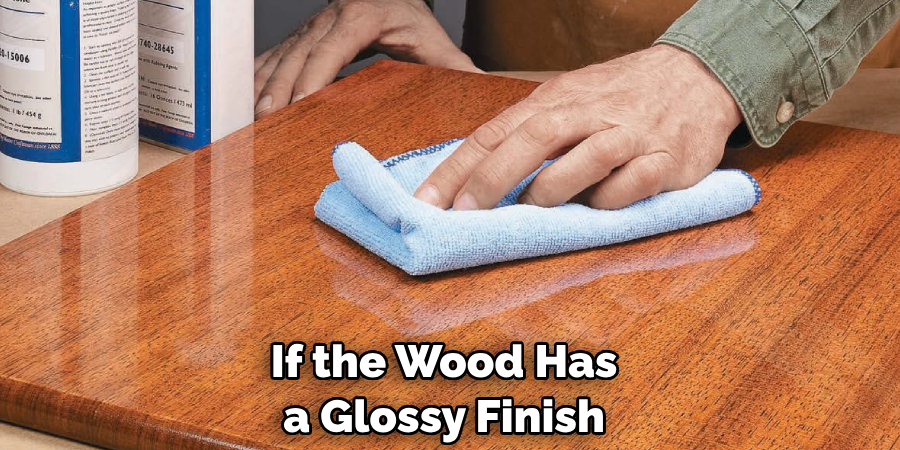
5. The Age of the Stain
Finally, it would be best to consider the stain’s age. If the stain is new, it will be easier to fix light spots. However, if the stain is old, it will be more difficult to fix light spots. In this case, it may be necessary to strip the old stain and apply a new one.
Fixing light spots in stains can be a challenging task, but with careful consideration, you can make sure that you get the best results possible. By taking into account the size of the area, type of wood, stain color, type of finish, and age of the stain, you can be sure that your light spots will be fixed in no time. Just remember to take the necessary steps and don’t rush into it. With patience and practice, you should have no problem fixing light spots in stains.
Benefits of Fix Light Spots in Stain
Stains on your clothing can be frustrating, especially in a highly visible area such as the chest or collar. Fixing those light spots in the stain can be incredibly beneficial for the appearance of your clothing and your overall confidence.
No longer will you feel self-conscious in a stained shirt. Being able to remedy those light spots can also save you money in the long run, as you won’t have to keep replacing clothing that has become stained beyond repair. Taking care of these small issues can make a big difference in how you feel and present yourself to the world.
Some Common Mistakes People Make When Trying to Fix Light Spots in Stain
We’ve all been there – you finish staining a piece of wood and notice light spots that don’t blend in with the surface. Trying to fix these spots as quickly as possible can be tempting, but it’s important to approach the situation carefully. One common mistake people make is using too much stain to cover up the light spots. This can result in an uneven finish and may make the problem worse. Another mistake is not allowing the stain to dry fully before applying additional coats.
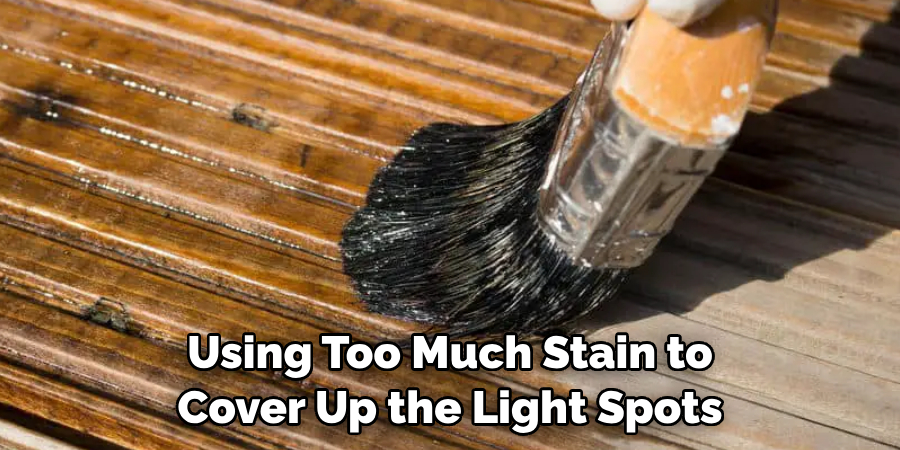
This can cause the stain to become tacky and may result in an uneven finish. When fixing light spots in stains, take your time, use a light touch, and be patient. With the right technique, you can achieve a smooth and consistent finish on your stained woodworking projects.
Conclusion
Fixing light spots in stains is a simple process that can be done with just a few easy steps. It’s important to remember to identify the problem areas, sand down the light spots, apply more stain, blend the stain, and seal the wood.
By following these steps, you can create a beautiful finished product that looks even and professional. So, next time you encounter light spots in your stain, use this step-by-step guide to help you fix the problem and get back on track with your project. Thanks for reading our post about how to fix light spots in stain.

